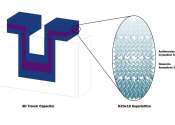In atomic physics and quantum chemistry, electron configuration is the arrangement of electrons of an atom, a molecule, or other physical structure. It concerns the way electrons can be distributed in the orbitals of the given system (atomic or molecular for instance).
Like other elementary particles, the electron is subject to the laws of quantum mechanics, and exhibits both particle-like and wave-like nature. Formally, the quantum state of a particular electron is defined by its wave function, a complex-valued function of space and time. According to the Copenhagen interpretation of quantum mechanics, the position of a particular electron is not well defined until an act of measurement causes it to be detected. The probability that the act of measurement will detect the electron at a particular point in space is proportional to the square of the absolute value of the wavefunction at that point.
An energy is associated to each electron configuration and, upon certain conditions, electrons are able to move from one orbital to another by emission or absorption of a quantum of energy, in the form of a photon.
Knowledge of the electron configuration of different atoms is useful in understanding the structure of the periodic table of elements. The concept is also useful for describing the chemical bonds that hold atoms together. In bulk materials this same idea helps explain the peculiar properties of lasers and semiconductors.









